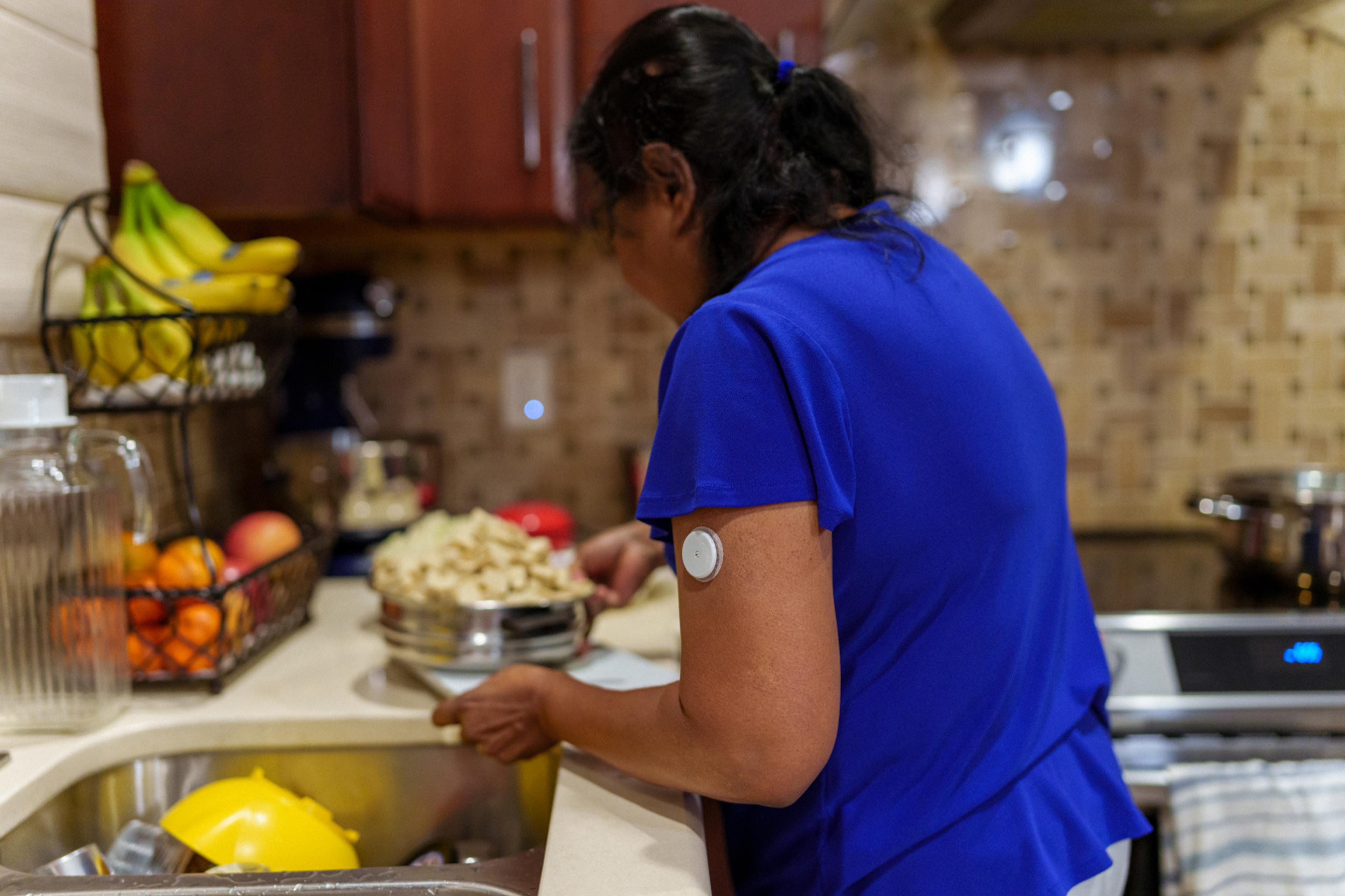5 Everyday Ways to Live Healthier with Diabetes

Shanthi Appelo
| 4 min read

More than 37 million people in the United States have diabetes, which is about 11% of the population. The most prevalent type is Type 2 diabetes, which is more common in adults. This chronic illness occurs when a person doesn’t produce enough insulin or does not use it well. As a result, the body struggles to use sugar as fuel and instead builds up in the blood. Diabetes can be a significant contributor to other health issues as well, including heart and kidney disease.
Even higher than these numbers is the percentage of people in the U.S. who have prediabetes. The U.S. Centers for Disease Control and Prevention (CDC) puts the number of people who have higher than normal blood sugar levels and could develop diabetes at 96 million, or one in three adults. While prevention should be the focus for those living with prediabetes, there are everyday ways to live a healthier lifestyle with diabetes. Let’s look at five of those:
#1. Get good sleep
Everyone should strive to get good sleep, but it is especially important for people with diabetes. Getting less than the seven hours of sleep recommended for adults can make it harder to manage diabetes, according to the CDC. Shortchanging sleep can lead to:
- Rising blood pressure, increasing the risk of a heart attack
- Depressed immune system, making it easier for infections to take hold in the body
- Increased insulin resistance
- Increased cravings for high-carb, high-sugar junk foods
- Increased feelings of hunger
#2. Drink enough water
Getting enough water each day is a big help to people with diabetes. It can leave less room for sugary beverages during the day. The feeling of fullness from water means people will be more likely to eat a healthy portion at their next meal, instead of overeating.
#3.Try strength training
Using hand weights, resistance bands or weight machines at the gym can help people with diabetes live healthier lives. Building and using muscles can help burn glucose and improve the body’s insulin response.Resistance training also aids in weight loss and heart disease prevention, two elements that help diabetes outcomes. The American Diabetes Association recommends fitting in two to three strength training sessions weekly.Individuals should talk to their doctor before beginning any new exercise routine.
#4.Walk after meals
Lots of people get up from a big meal, and head directly to their favorite chair or couch. Instead, try walking after a meal, even if it’s only for a few minutes. Studies have shown that walking for just two to five minutes after a meal can reduce the sharp rise and fall of blood sugars levels that can occur after people eat. While it’s normal for blood sugar to rise after a meal, spikes in that 60- to 90-minute window after the beginning of a meal can be unhealthy for people with diabetes.
#5. Spread carb intake throughout the day
Carbohydrates – in the form of sugars, starches and foods with lots of fiber – are important energy sources that should be in everyone’s diet. But eating too many carb-heavy foods in one part of the day can lead to blood sugar spikes that are not good for people with diabetes. A healthy way to eat is to spread out the carb intake over the course of the day, with some carbs in each meal or snack. This will help keep blood sugar at a more normal level.
Alongside medications, people with diabetes can talk to their healthcare providers about ways to manage blood sugar levels with lifestyle and nutrition changes. While diabetes care can vary among individuals, these recommendations from the CDC are great guidelines to keep in mind:
- Don’t skip meals
- Eat at regular times each day
- Drink water instead of soda or sugary juices
- Limit alcohol
- Choose fruit for dessert
If someone has prediabetes, this should be seen not as an impending chronic illness, but as an opportunity to make diet and lifestyle choices that can improve their health. Nutritious and controlled portions of fiber-rich foods should be on the plate at every meal, and regular exercise is a must.
Other ways to reverse prediabetes include:
- Get enough sleep
- Avoid all tobacco products
- Overweight people should aim to lose 5% to 10% of their current weight
Shanthi Appelö is a registered dietitian and health and wellness spokesperson at Blue Cross Blue Shield of Michigan. For more health and wellness information, visit AHealthierMichigan.org.
Photo credit: Getty Images





